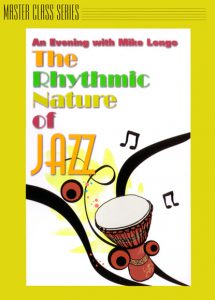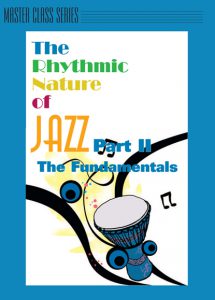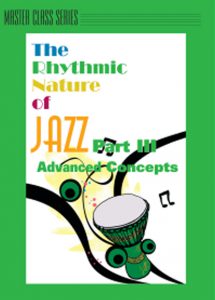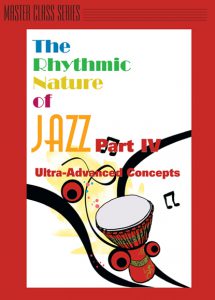Jazz Education Breakthrough!
The following is from an article that appeared as a spoof in All About Jazz magazine, based on the idea that Benjamin Franklin, by means of a time machine, came back and wrote the article from his observations of the current jazz scene.
“What young jazz musicians need now, and more than ever before, is jazz apprenticeship with ‘elder statesmen,’ outside of the context of the four walls of the collegiate corporate empire and its connected political machine. Apprenticeship is a wise and frugal way to learn this great music. Young jazz musicians must seek out wiser and older musicians who will teach them the trade of being a jazz musician as well as the fundamentals of their respective instrument in relation to the tradition, while encouraging individuality in the entire process.”
Although it was intended as a spoof, it nevertheless brought some very thought-provoking insights into the open. It can be read in its entirety by going to the following link: Read Full Article
Apprenticeship Breakdown
There is no question about it, the breakdown of the apprenticeship system that occurred in jazz around the 1980s has impacted it in such a way that jazz, as an art form, has virtually lost its audience. This comes in the wake of jazz clubs around the world going under at an alarming rate due to lack of attendance, while so called “jazz festivals” have resorted to booking acts that more or less resemble rock and roll or hip hop music rather than jazz in the traditional sense, and publications like the Wall Street Journal releasing articles proclaiming jazz to be “dead.”
There are those of course who will argue “the face of jazz has changed…get used to it!” This, however, fails to take into account the idea that if you are going to replace something, it should be replaced by something that is better. “Not as good” is unacceptable! As the late Igor Stravinsky once stated, “No new music comes from anything but the tradition.” His point being that music moves forward by musicians digesting the “tradition” while allowing the music to evolve on its own to the next level. The false prophet can always be distinguished from the true prophecy by the fruits produced by their position. The negative “fruits” outlined in the previous paragraph can be attributed to the argument quoted above stating that “the face of jazz has changed . . .”
Mike Longo’s Contribution
Jazz pianist/composer Mike Longo, who was a student of Oscar Peterson and served for many years as Dizzy Gillespie’s pianist and musical director, has stated “although we have some great jazz educators and wonderful jazz departments across the country, there is a certain ingredient that, in my estimation, needs to be added to the curriculum.” Longo is alluding to the rhythmic concepts espoused by Dizzy Gillespie, and picked up by Longo through his long association with the Master. Longo has related these ideas in master classes at different universities to the delight of students and educators who were awestruck by the revolutionary ideas he put forth, as well as the manner in which he presented his program.
New On Demand Learning Series
This led producer Andrew Schoenfeld to hire a film crew to film these lectures at recent appearances at schools and universities which have been released as a 4 DVD series (available in downloadable form) which teach the concepts of rhythm that Longo learned from Gillespie. These downloadable DVDs may very well prove to be the missing link in jazz education that will eradicate the problems mentioned earlier.
This provocative and enlightening educational series entitled “The Rhythmic Nature of Jazz” is now available to you through Consolidated Artists Productions, Inc. on their website at www.jazzbeat.com.
Upon experiencing the demonstrations presented during these lectures and interactive experiences with students, you will become aware of the concepts that produced the pulsating, driving rhythms that fueled the music of jazz greats like Diz, Miles, Bird, Coltrane, Cannonball and others. This will aid you greatly in your ability to preserve this rich tradition and reverse a trend towards an impotent sound that results from a metronomic time conception producing music that, although it is jazz influenced, has more of a classical vibe to it.
Longo points out to you the difference between experiential knowledge, which is precisely what is passed on through the “apprenticeship” alluded to earlier, and intellectual knowledge. What you will now have is a marvelous tool for communicating these principles to your students through the techniques outlined in this 4 staged course of study. Prior attempts at pedagogy relating to rhythm and timing have been approached through “feelings and imagination,” a concept that will be proven to have been innocently false by the material presented in this course. In addition, you will be given the opportunity to download drum rhythms recorded by Mike for DVDs II and III so that you can practice along with him. And with these drum rhythms you receive a FREE Mike Longo CD.
Dizzy Gillespie
Dizzy Gillespie, when asked what his music was about, replied, “Absolute love for every man, woman and child on the planet.” This was the vibe in his music, and now you can find out what forces were in place to produce this vibe. You actually will learn the PHYSICS of producing the “LIFE FORCE” and applying it to produce a most glorious and powerful music.
Hal Galper
Pianist extraordinaire Hal Galper, who is on the faculty at the SUNY/Purchase Jazz Department, appears in a YouTube Master Class presentation where he points out that the biggest problem facing jazz education today is the inability to teach the concept of syncopation. He goes on to point out that there is no pedagogy on the subject and mentions that the closest thing to it is a book by Longo entitled “How to Sight Read Jazz and Other Syncopated Type Rhythms.” Now, at last, this problem will be solved for you with this provocative set of DVDs that are now highly recommended on the Hal Galper website.
Jazz Education Breakthrough!
You can now help yourself and your students return to the passion-arousing music that turned on jazz fans of the past. By experiencing the sensual gratification produced by the polyrhythmic and polymetric jazz of the great jazz masters such as Bird and Diz, you can pass this experiential knowledge on to your students, protecting them from slipping into much of the lifeless “head” music that has practically eliminated the jazz audience and caused former jazz fans to proclaim that the music they hear in clubs and festivals today often sounds “dead.”
Now you and your students will be exposed to and in contact with the very forces that gave jazz its power in the past, allowing you to bring back the life force associated with the art form that America gave to the world, to the people.
With the information passed on through this series, the opportunity presents itself for you and your students to move into a healthier existence as performers, earning an income that enables one to have a successful family life. Wouldn’t you want to be able to sustain this through performing music that reaches people in a way that they will want to spend money once again to hear it?
QUOTES:
Hilary Gardner, vocalist who has appeared on Broadway in the Twyla Tharp musical “Come Fly Away” said, “Working with the drum and Mike’s approach to rhythm has transformed my singing on both conscious and unconscious levels.”
Pianist and singer Anne Meronchic, currently working in the New York City area said, “What Mike’s teaching has done for my playing has profoundly affected my time.”
Alden Banta, multi-woodwind instrumentalist currently working on Broadway, said, “I came to see Mike and had no idea of what I was about to experience. In my first lesson he pulled out a drum and showed me some things I had never heard of before, and that was the beginning of what I feel like was my musical education.”
Trumpeter John LeJoi, recent graduate of the Masters Program at NYU said, “Mike’s rhythmic idea, I believe, is one of the most important things that I’ve learned and has really opened up another whole world in terms of my playing.”
Classical violinist and jazz pianist Gail Reeke said, “Mike Longo has developed a very effective way to teach the ‘swing’ in jazz, which is otherwise so elusive and such a challenge for aspiring artists to master. The exercises work amazingly well!”
World renowned jazz saxophonist Bennie Wallace said, “What Mike brought from working with Dizzy Gillespie is really what makes it jazz and really makes it distinctive, and this is the part that is always missing from jazz education.”
Additional Learning Information
You will now be in possession of the very information necessary to return things like the jam session into a fun and successful group interaction instead of the competitive and negative environment it has now become amongst young people.
This is something you simply cannot afford to be without! For more insights about what is contained in this powerful and provocative series go to the following YouTube pages.
Why waste time and money on a trip downtown to a music store searching for this product when you can have the potent information provided in this DVD series downloaded directly onto your computer, laptop or pad.



